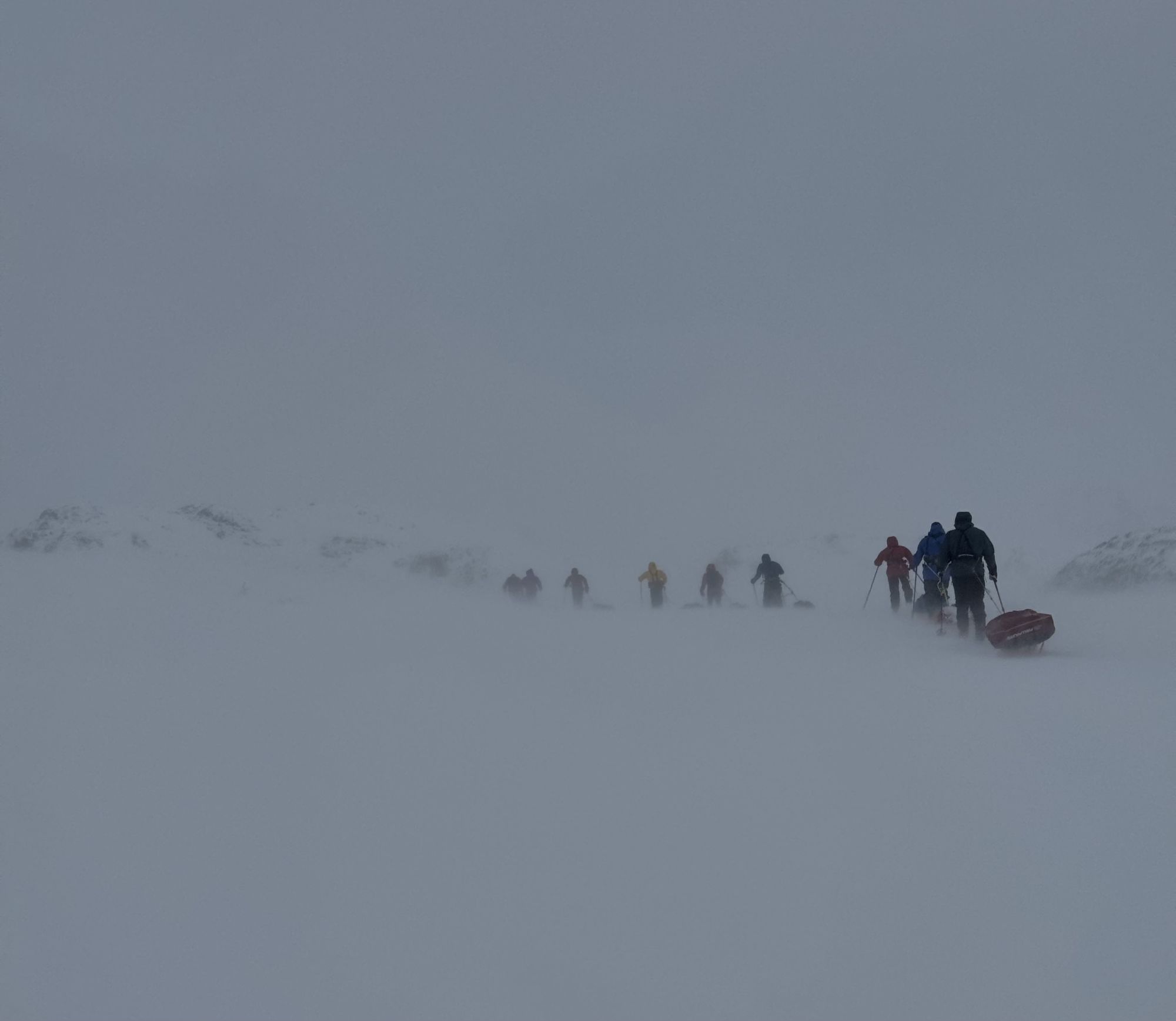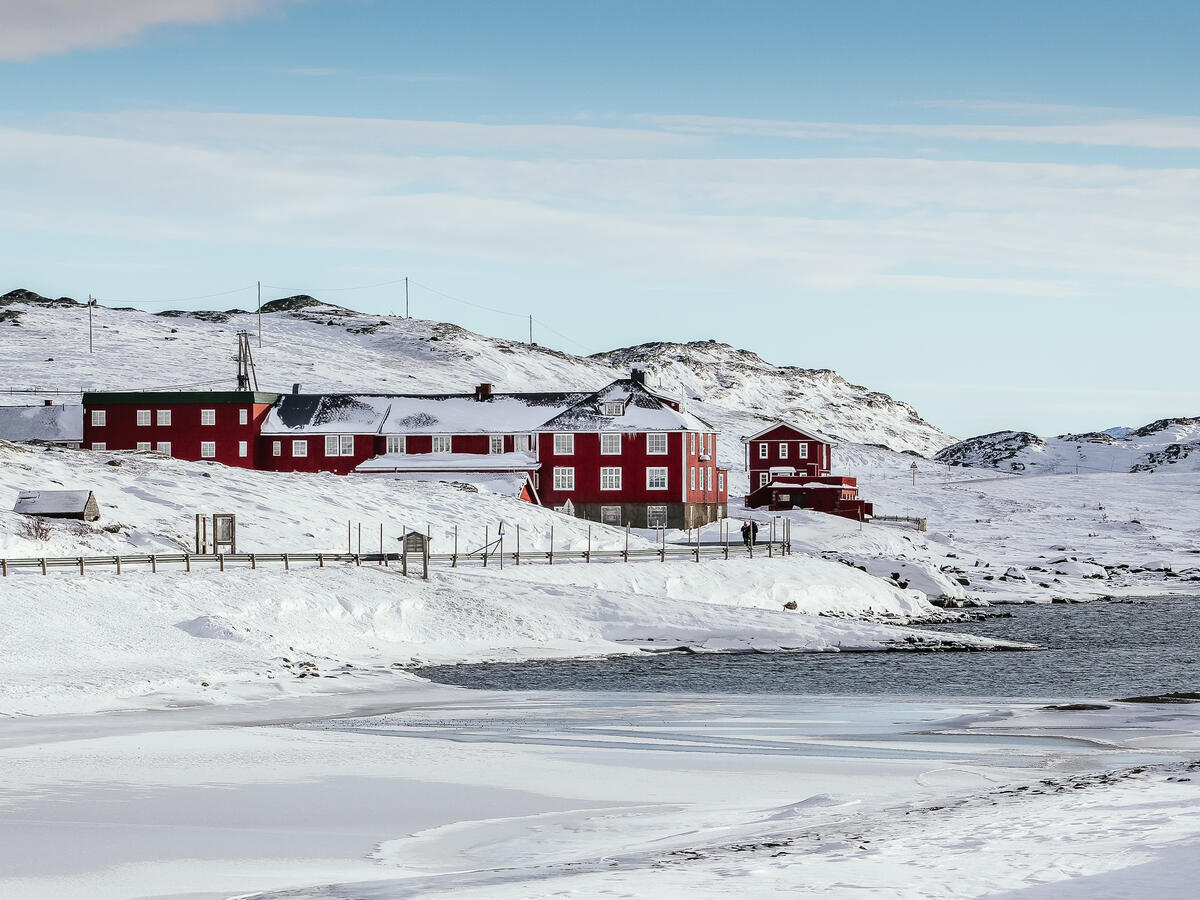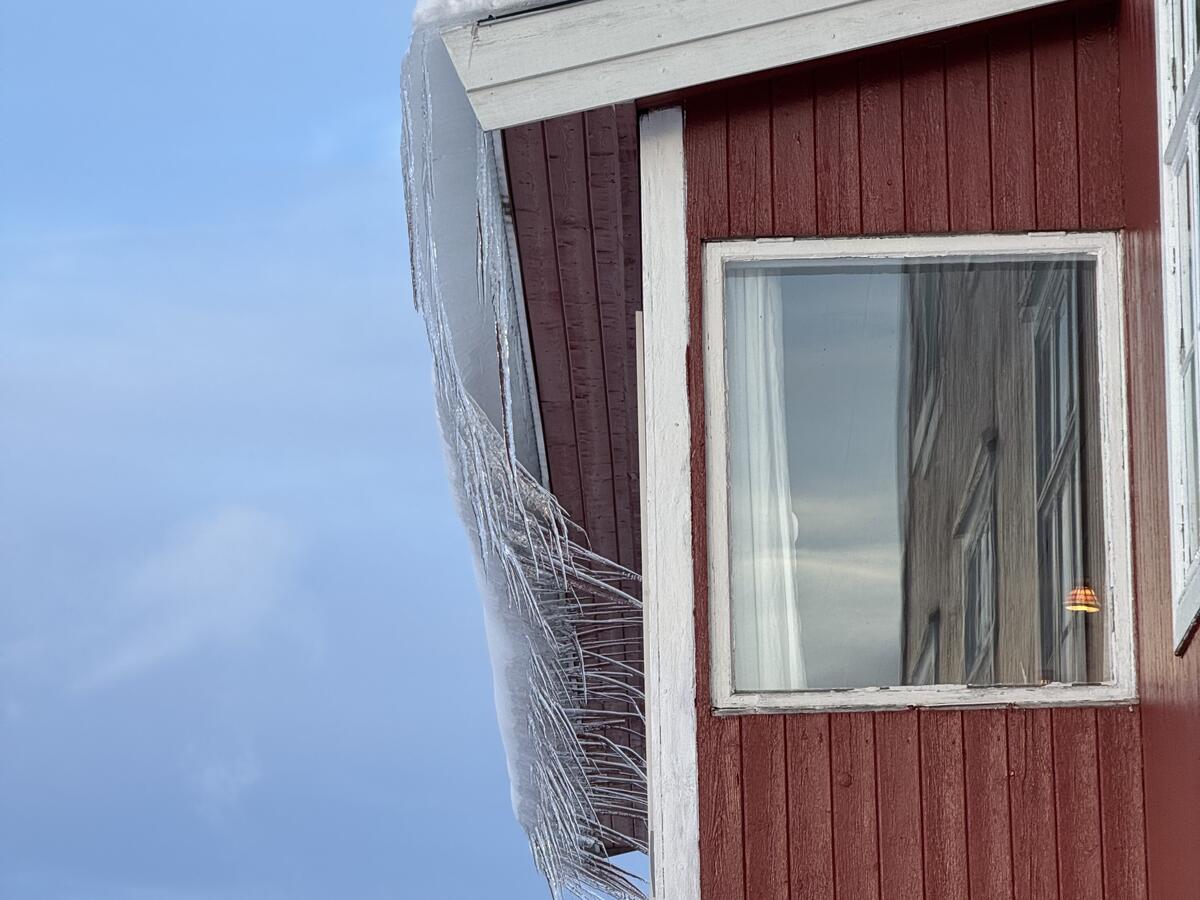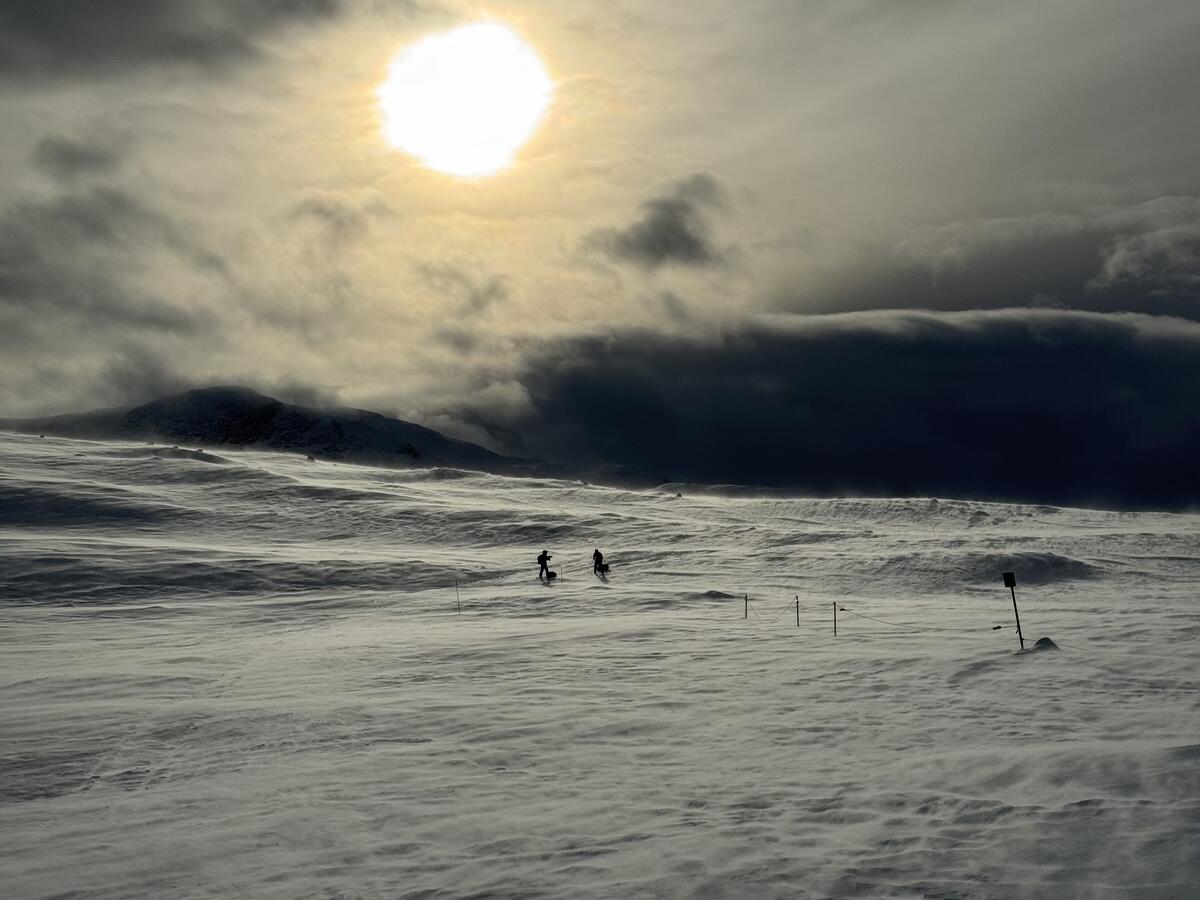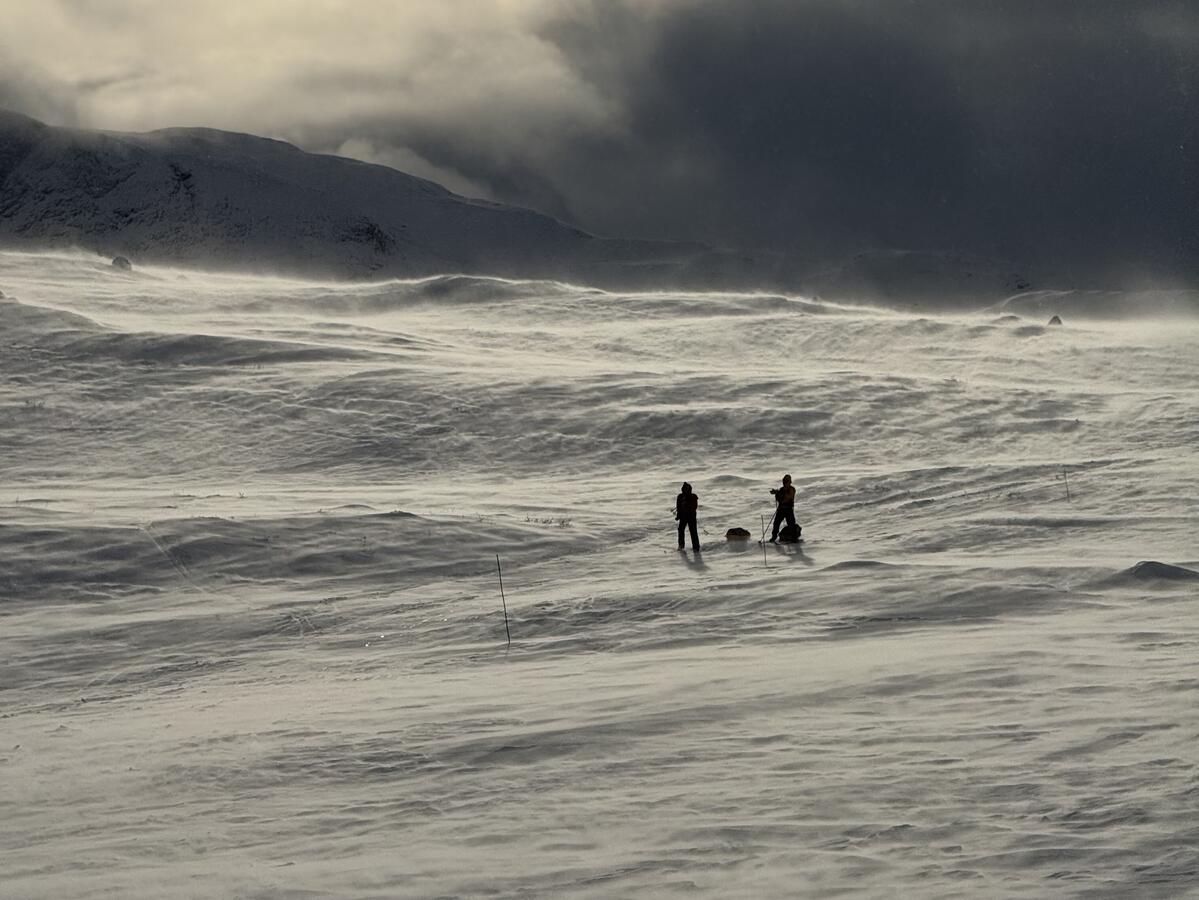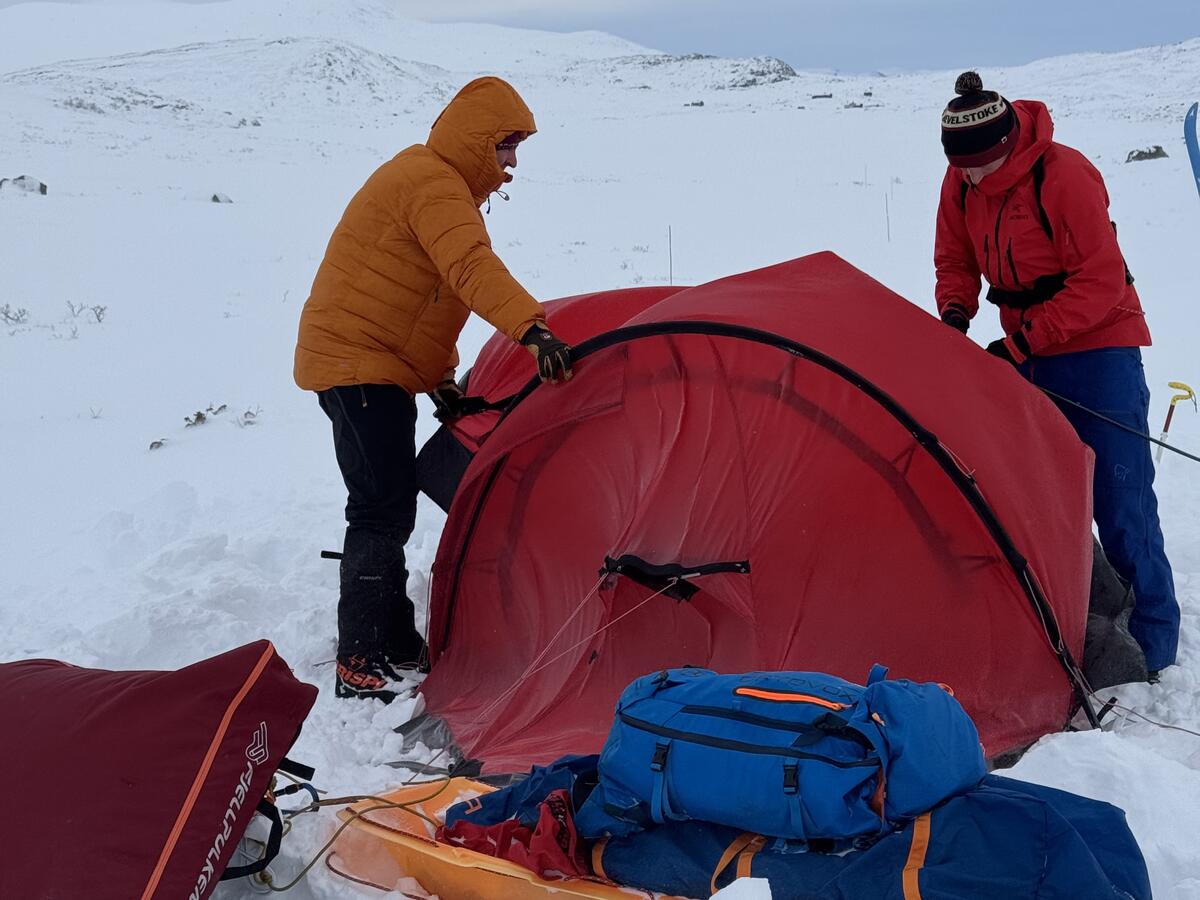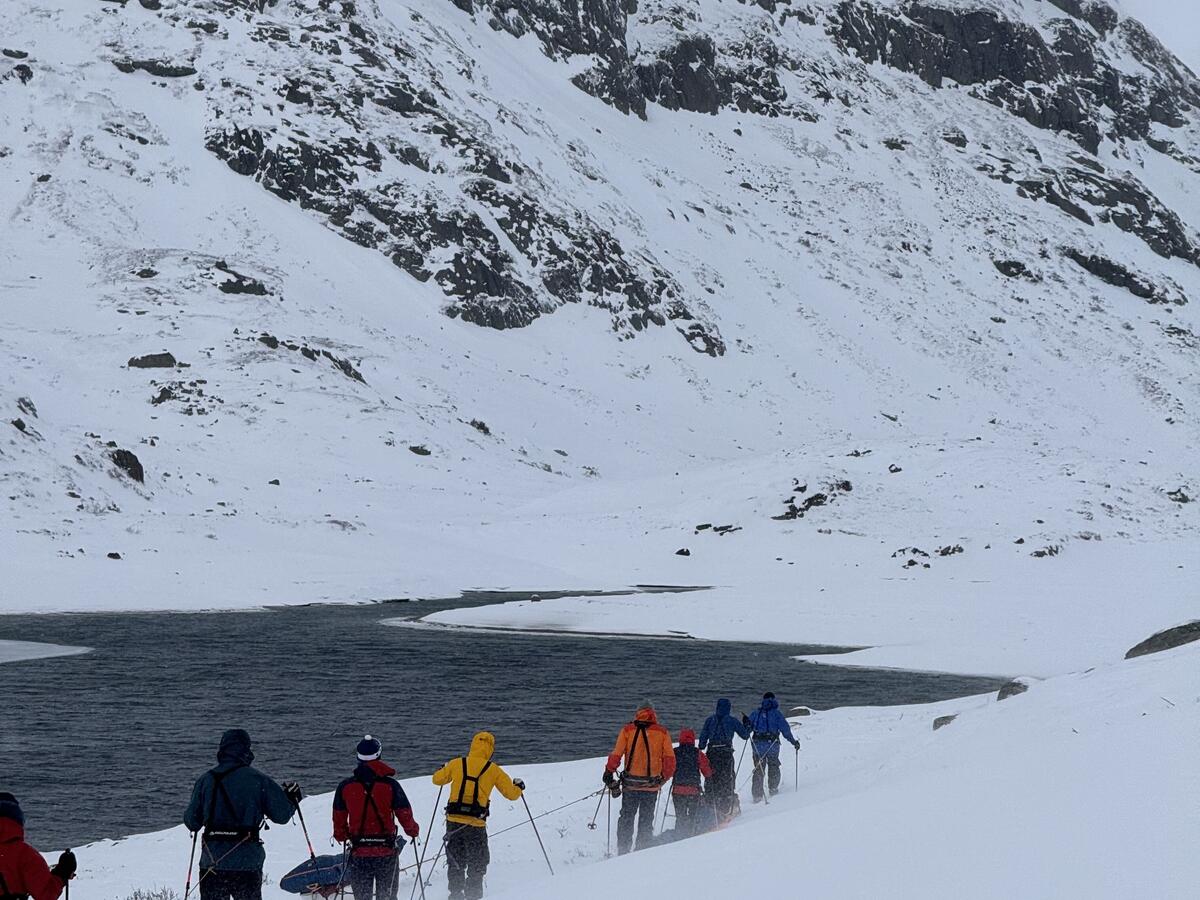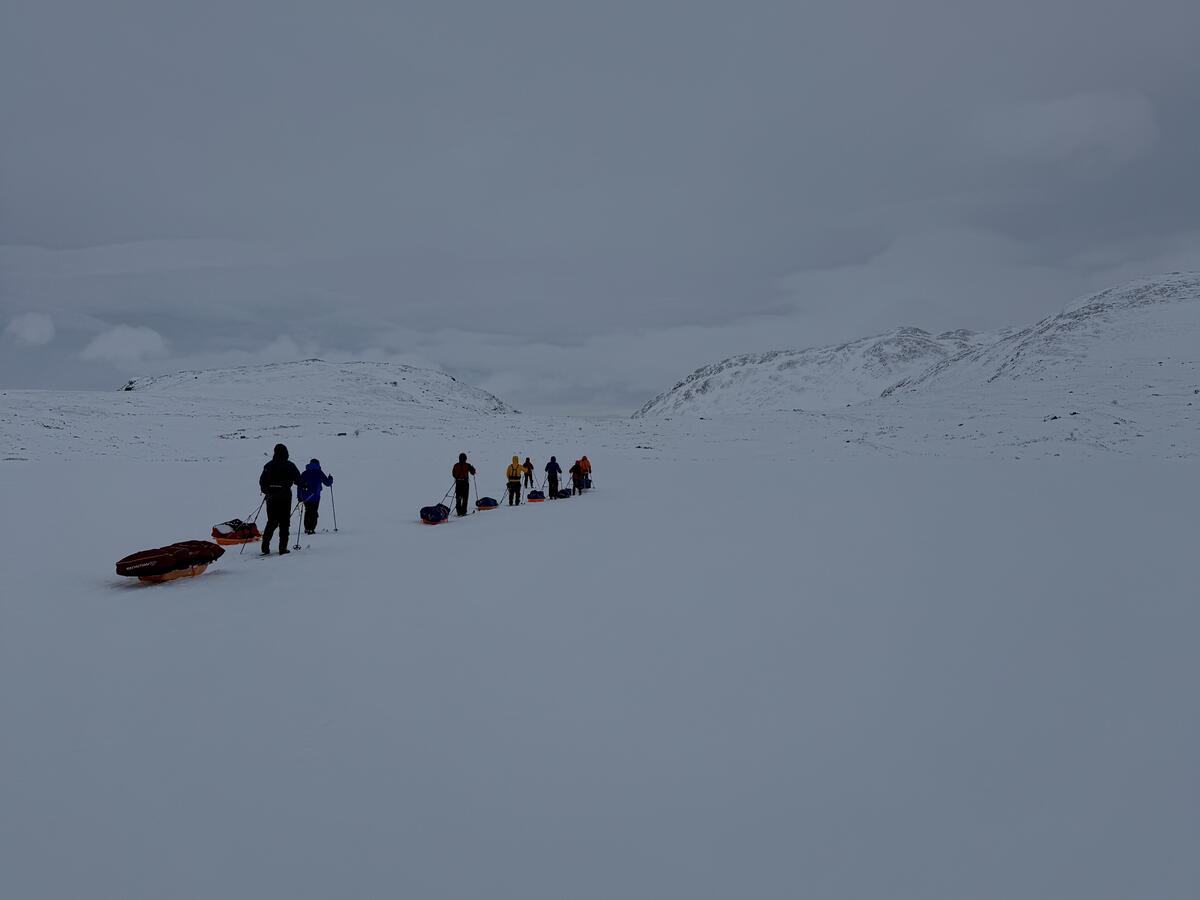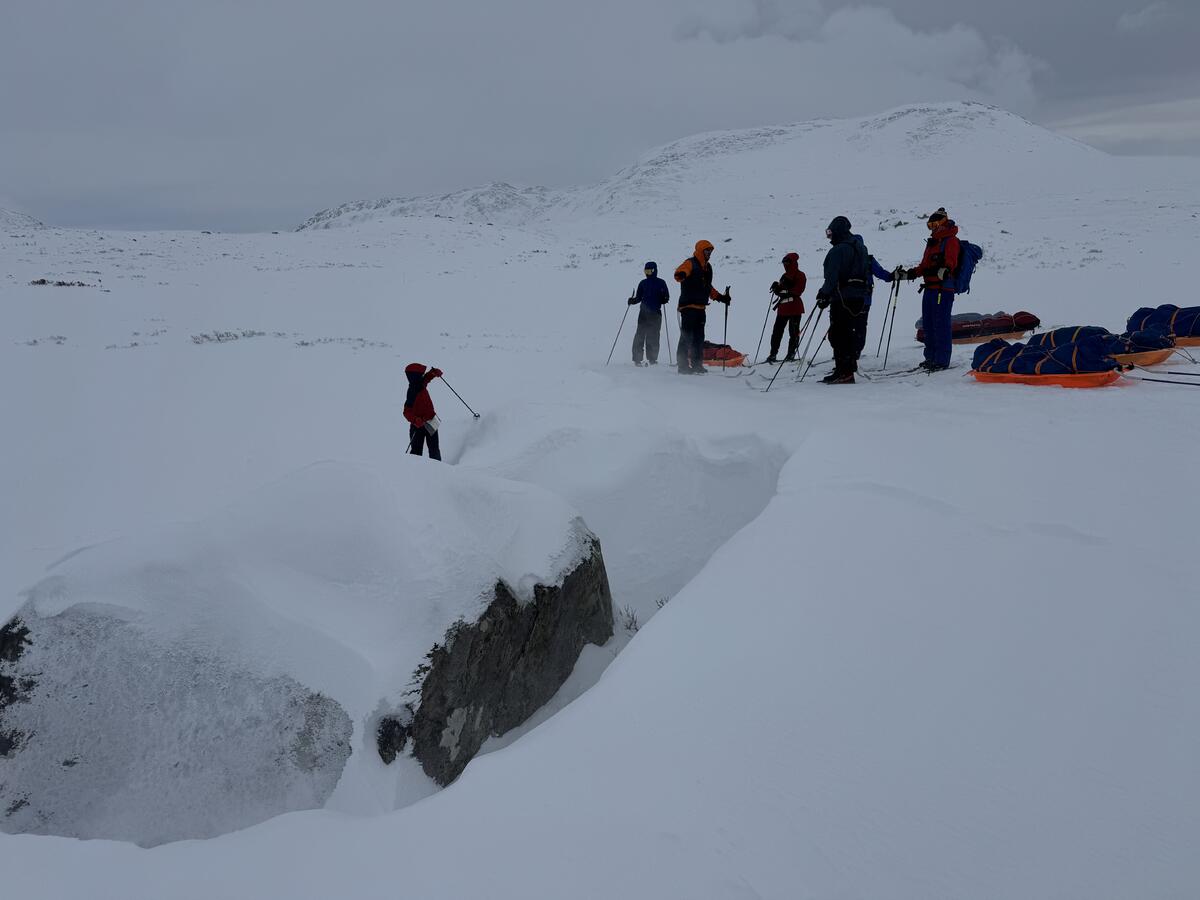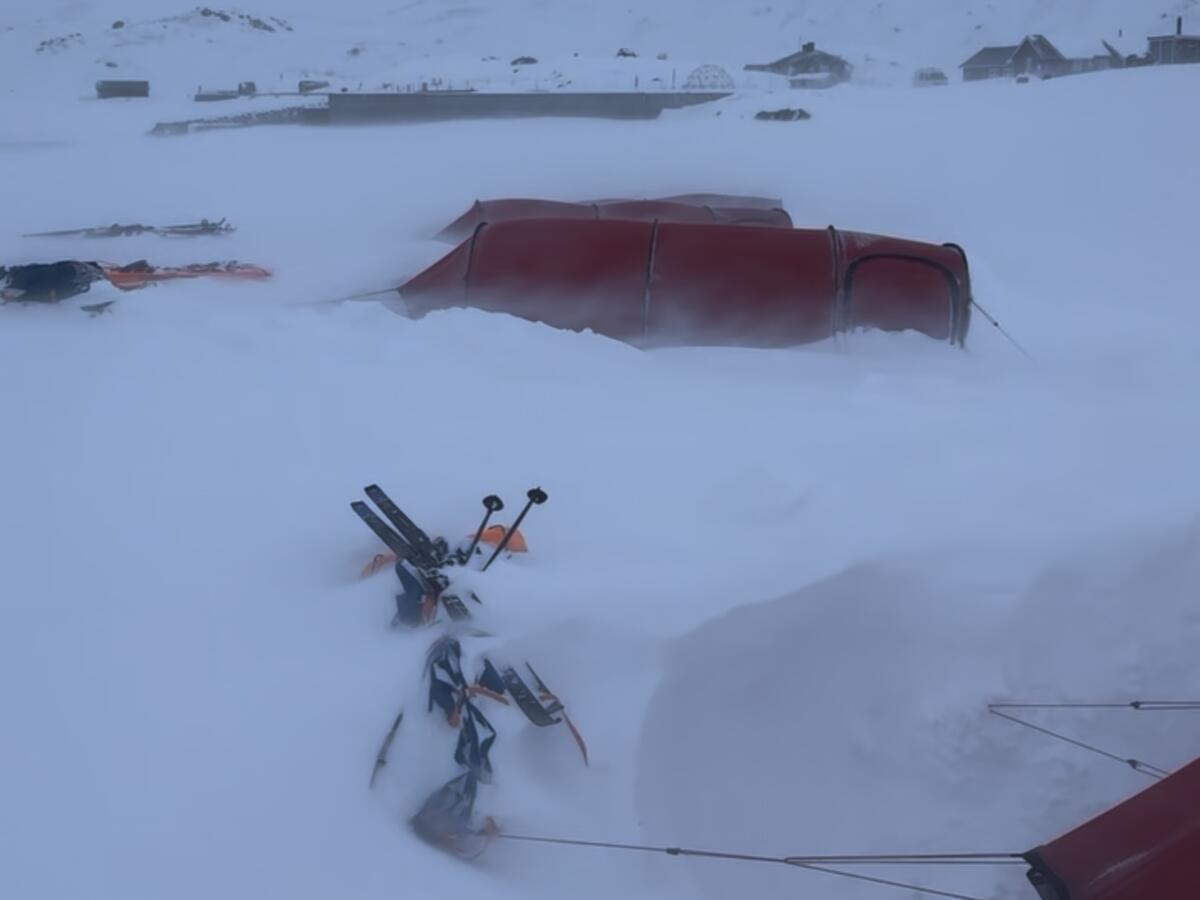There are some experiences that test you, and some experiences that teach you. My Norrøna Adventure expedition course in Jotunheimen did both. I went into the Norwegian mountains seeking to learn the fundamentals of winter camping. I came out with a newfound respect for the wild and the importance of having qualified guides on an introductory trip like this.
Day 1: The Calm Before the Storm
The journey began with a scenic drive from Oslo into the heart of Norway, arriving at the historic Bygdin Høyfjellshotell on a Thursday afternoon. One by one, the other participants arrived, a small group of strangers who would soon become a tight-knit team. We gathered in the reception, a sense of shared anticipation in the air, before our Norrøna guide’s led us to a private room for our introduction.
Surrounded by winter camping gear, we discussed our expectations for the days ahead. The guide’s calm expertise was immediately reassuring, answering every question with the clarity that only comes from experience. The evening was a beautiful contrast to the ruggedness we were about to face – a delicious three-course dinner made with local ingredients, a final taste of comfort before the wild. As we talked more about equipment after dinner, the reality began to sink in: tomorrow, we would leave this warmth behind.
Day 2: First Steps into the Wild
Friday started with a nice breakfast, fuelling us for a day of practical learning. Our classroom was in the crisp mountain air just outside the hotel. First lesson: how to pitch a tent in high winds, a skill our guides insisted we practised. "This will probably become helpful," he said with a knowing smile. We practiced, packed it down, and moved on to the burners. The roar of the MSR XGK II stoves seemed to echo the power of the landscape. After some trying and failing, we all managed to safely operate them, another crucial skill introduced to us.
The final step before departure was packing our pulkas—our personal sleds loaded with everything needed for the next two days. After a final lunch inside the hotel, we clicked into our skis and stepped out. The weight of the pulk was a constant, physical reminder that we were now self-sufficient. We skied for about an hour, covering just a couple of kilometers before finding a suitable campsite. The weather was kind, a gentle mix of clouds and blue sky, but we practiced as we were taught, setting up our tents as if a storm was already upon us. The guides moved between the tents, offering tips and tricks—never intervening too much, but just enough to ensure we were learning correctly. Dinner was a simple, freeze-dried meal, but after a day of learning and labour, it felt wonderfully satisfying. As I zipped up my sleeping bag, with a final check-in from the guides, I felt ready for whatever came next.
Day 3: A Masterclass in Mountain Weather
The silence of the mountain morning was broken by the sound of our stoves boiling water for breakfast and coffee. We packed down our camp, again practicing the high-wind technique our guide had shown us. During our morning meeting, the mood intensified. Our guide laid out the day's plan: a focus on winter navigation, with each of us taking a turn leading the group. Then came the update we were all waiting for—the weather forecast. The wind was going to pick up throughout the day, culminating in a full-blown storm during the night with sustained winds of 25 m/s (56 mph) and gusts up to 35 m/s (78 mph).
The forecast was ominous, but the plan was sound. We would ski further out before turning back towards the relative safety of Bygdin for our final night. As we skied, the wind began to rise. Leading the group with a map and compass while the landscape grew more hostile was an intense, immersive lesson. For lunch, we huddled inside two tents for shelter, a small taste of what was to come.
By the time we reached our designated campsite near Bygdin, the wind was powerful. Our guide made a critical decision: we would dig 20-30 cm pits to set our tents in, reducing their profile against the wind's fury. It was all hands on deck. In teams of four, we dug our pits, wrestled with the fabric, ensuring no tent was lost to the wind. Huddled inside, we cooked our dinner as the gusts violently shook the tent walls. Sleep didn't come easy, but the feeling of being secure inside the shelter we had built was immense. Twice during the night, our guides were out in the storm, diligently checking and clearing snow from our tent vents to keep us safe.
Day 4: Emerging from the Storm
We woke to a world transformed by wind and snow. Our first task was to dig ourselves out. After breakfast, we carefully excavated the tents from their snowy pits before taking them down one last time. Before skiing back, our guide led us to a nearby cornice that had broken off during the night—a stark, real-world lesson on the dangers and dynamics of the winter mountains.
The short ski back to Bygdin felt like a triumphant return. We unpacked our gear, the satisfaction of a job well done warming us from the inside. The final lunch at the hotel was more than just a meal; it was a celebration. The food tasted even more delicious after two days of freeze-dried rations. We summarized the trip, asked our final questions, and then, it was time to head back to civilization.
Leaving Jotunheimen, I felt profoundly proud. The trip was more than a course; it was a testament to the importance of preparation, the strength of teamwork, and the value of guidance. We faced severe weather, but thanks to the foresight and leadership of our Norrøna Adventure guides, we never felt unsafe. We felt empowered. We had learned not just how to survive in the winter mountains, but how to thrive.
- Jørgen
